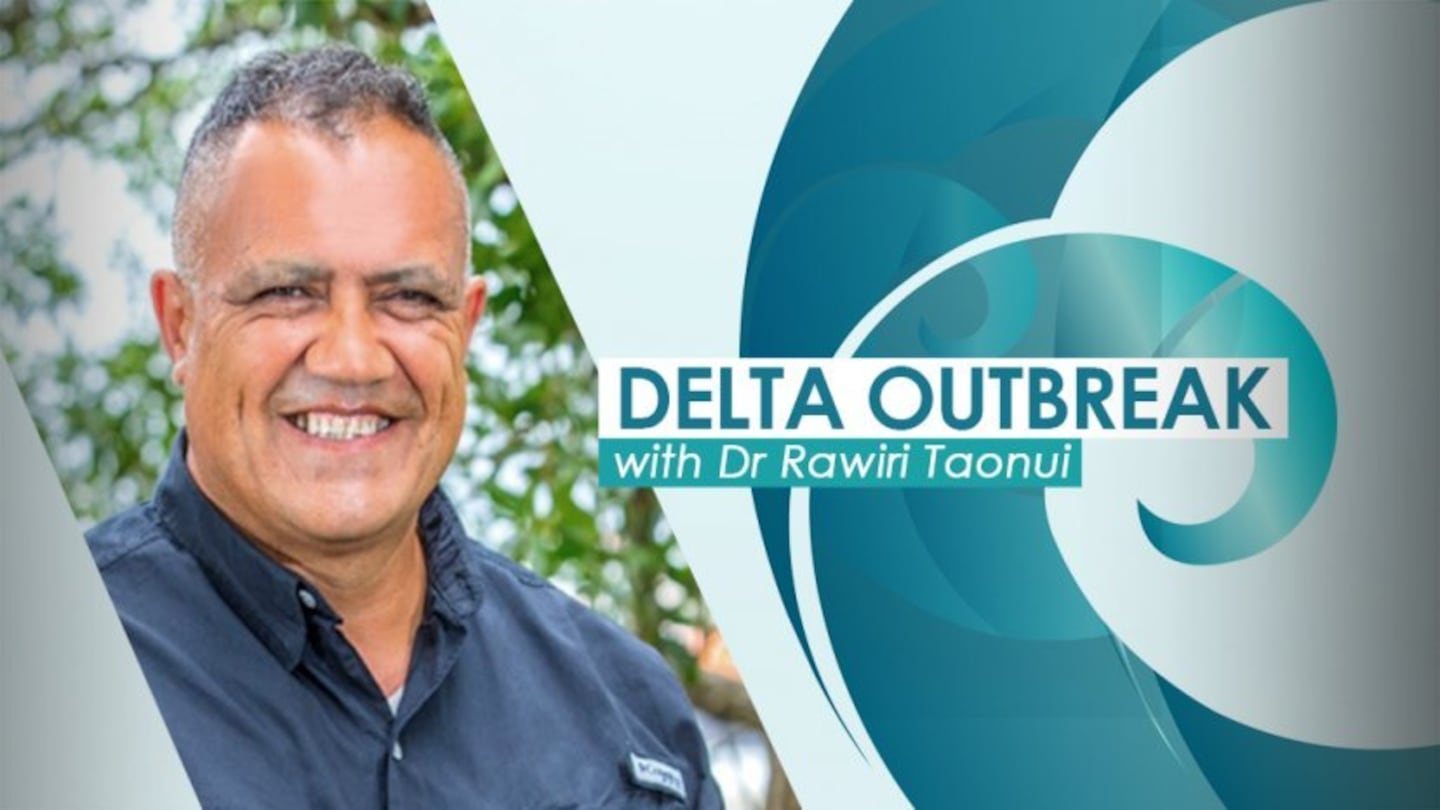Although the overall decline in Omnicron cases is good, active Māori cases remain above their 17.1% demographic share of the population in 13 district health boards.
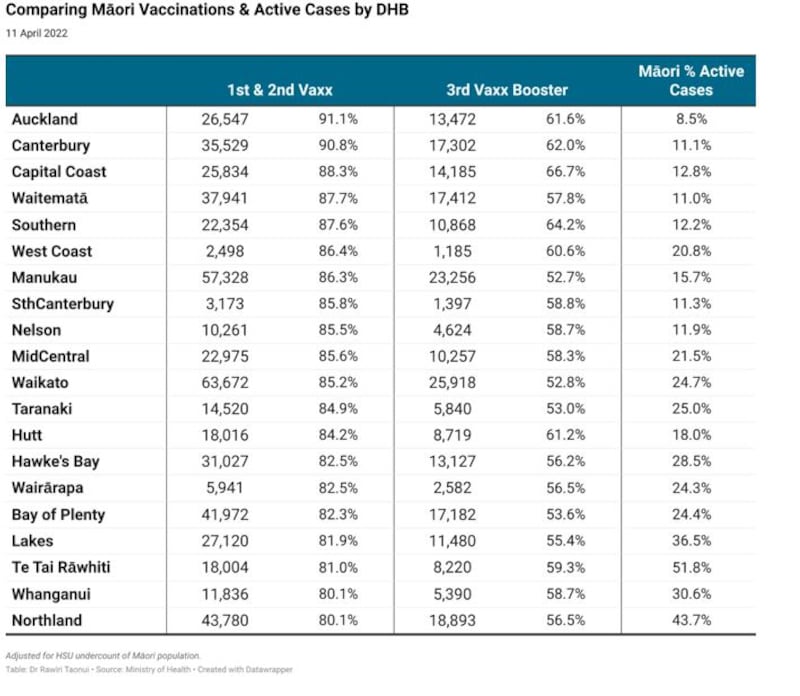
The percentage of Māori active cases has risen relative to non-Māori in eight DHBs, including Auckland and Waikato, and several lower North Island and South Island DHBs, meaning Māori cases are declining slower in those regions than other ethnicities.
Māori can be optimistic about the link between high Māori vaccinations and lower percentages of active cases in many DHBs. Conversely, Māori must be concerned about the direct link between lower vaccination rates and higher percentages of active Māori cases. This could prove significant once an expected second wave arrives.
Traffic light settings
The government will revisit the Red Traffic Light setting on Thursday, April 14. With up to a month before cases will fall below 1,000 per day, it would be preferable not to move from red to orange at this time.
Second wave
Aotearoa should see a second wave of Omicron at some time between July and October. The drivers for this will change in behaviour such as less mask-wearing and social distancing as the government relaxes traffic light settings, and protection from previous infections and vaccinations waning over coming months.
The priority for Māori is to increase vaccinations principally the 16yyears+ boosters and tamariki vaccinations.
Current situation
On Monday, April 11, there were 7,592 new community cases, 640 hospitalisations and 11 deaths. The seven-day rolling average of case numbers continues to decline. On Monday, this was 10,169 compared with 13,218 the previous Monday.
The number of reported community cases continues to fluctuate day to day with lower testing and reporting over the weekends and higher testing and reporting on weekdays.
The overall trend is downward with peaks as follows:
- New daily cases, March 8: 23,894.
- Active cases, March 10: 208,734.
- Hospitalisations, March 22: 1,016.
- Fatalities two weeks ago, March 29: 34.
- All District Health Boards (DHBs) reached their peaks between two and six weeks ago except for the West Coast, which peaked last week.
Daily cases
Cases in Auckland Metro, which drove the early stage of the outbreak, have steadily declined early in March. The total number of new cases in other DHBs, which passed Auckland a month ago, continues to fluctuate but is also steadily declining. As in previous weeks, we will likely see a rise in cases on Tuesday but the overall trend of declining cases will hold.
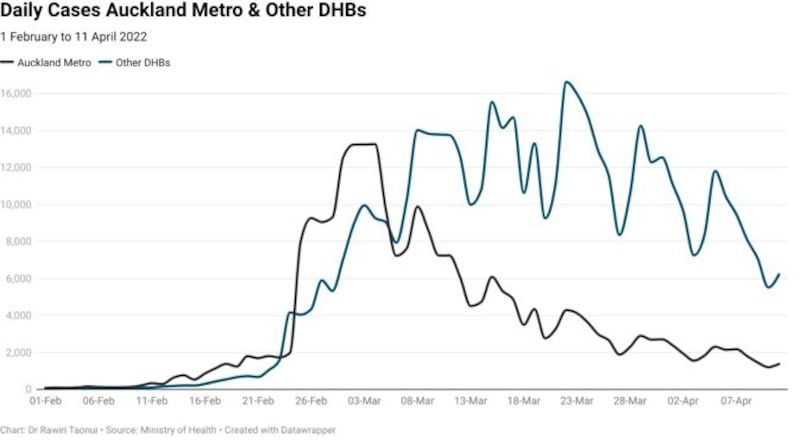
The seven-day average of new cases per day is a key indicator for the trend of the outbreak because it smooths day-to-day fluctuations. From a peak of 19,888 on March 12, over the past 30 days, the seven-day trend has fallen to 10,169. On this trajectory, new daily cases will fall below 1,000 per day near the second to third week in May.
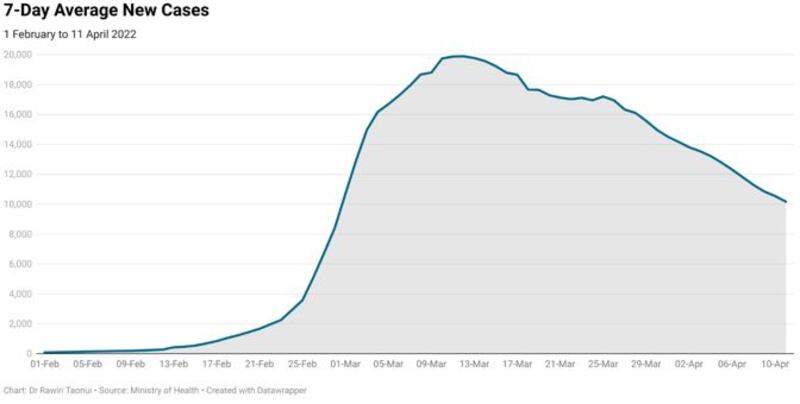
Cases by Ethnicity
The Pākehā community continues to dominate new cases, with the highest daily cases for 48 consecutive days.
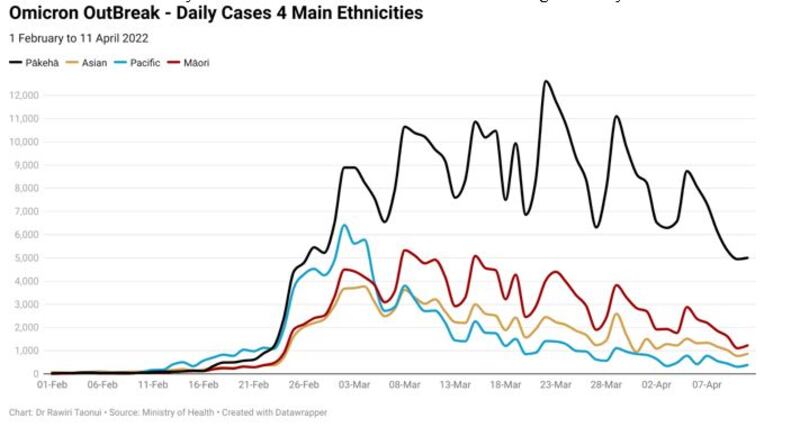
Māori have had the second-highest cases for the past 37 days. A risk in early March that Māori cases might converge alongside those in the Pākehā community and dominate the Omicron tail has now abated. Maori cases have declined faster than in the Pākehā community, down to levels just above those in the Pacific Peoples and Asian communities.
Māori cases by DHB
The following map compares the overall total number of active cases, the total number of active Māori cases and the percentage of active Māori cases in each DHB, between April 4 and April 11.
Consistent with the national trend, total cases have fallen in all DHBs. Māori active cases have also fallen in all but one DHB.
More significantly, active Māori cases have fallen as a percentage of total active cases in 12 DHBs meaning the number of Māori cases is declining faster than the total active cases of all other ethnicities. This is particularly noticeable in the Northland Te Tai Rāwhiti DHBs where respectively the proportion of active Māori cases was previously higher than 50% and 60%.
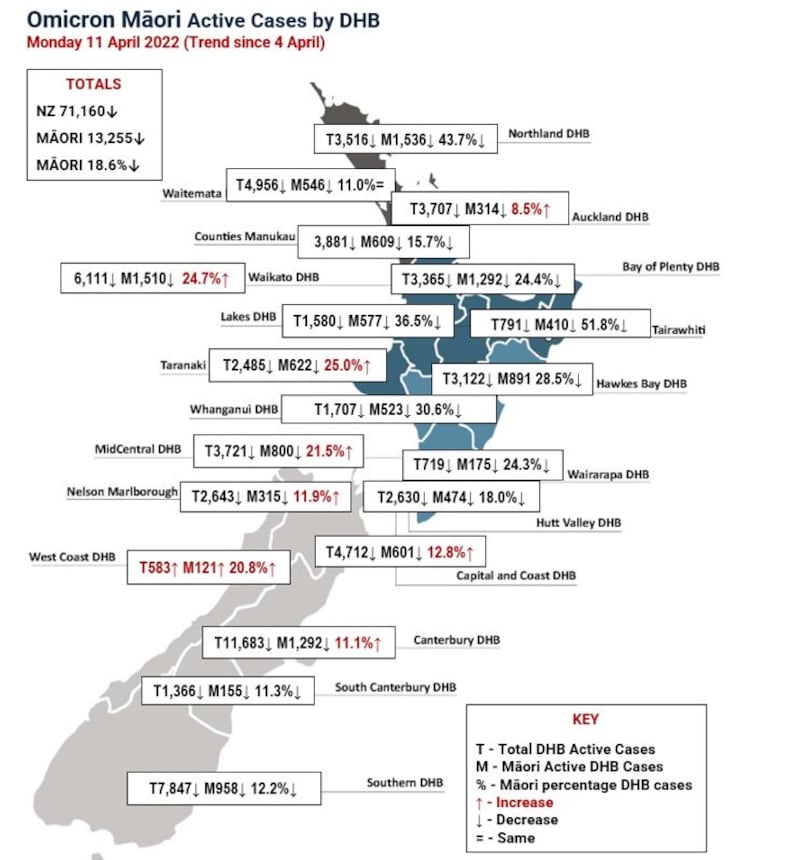
Kia noho haumaru, stay safe and self-sovereign.
Dr Rawiri Taonui


